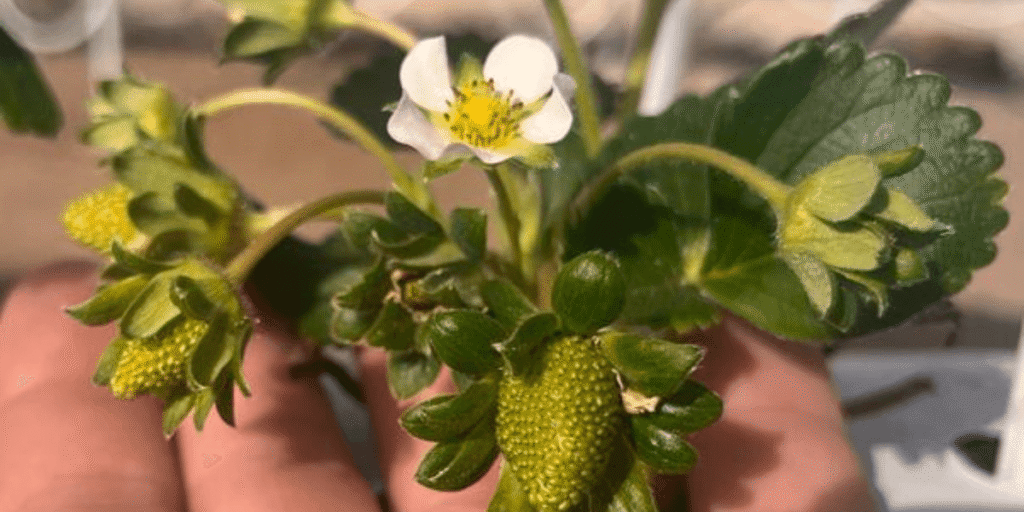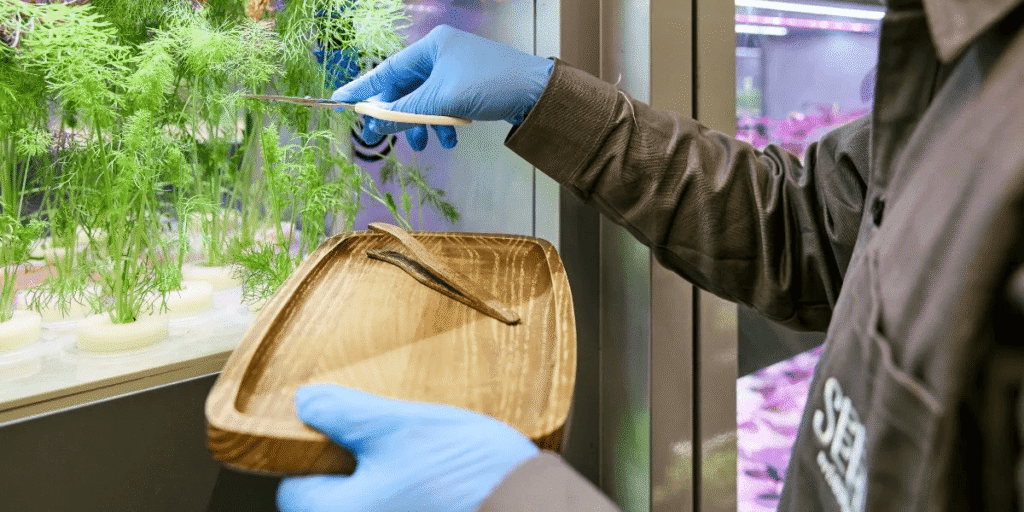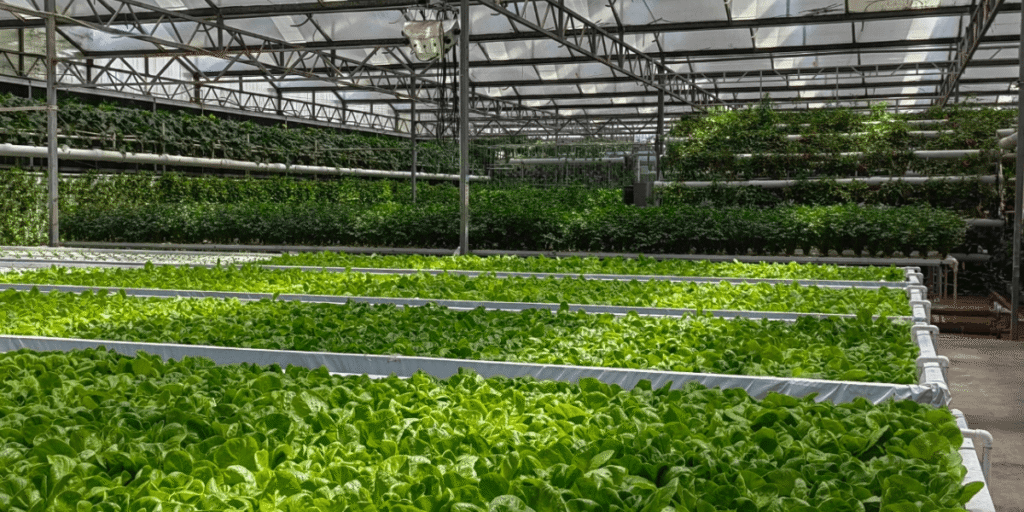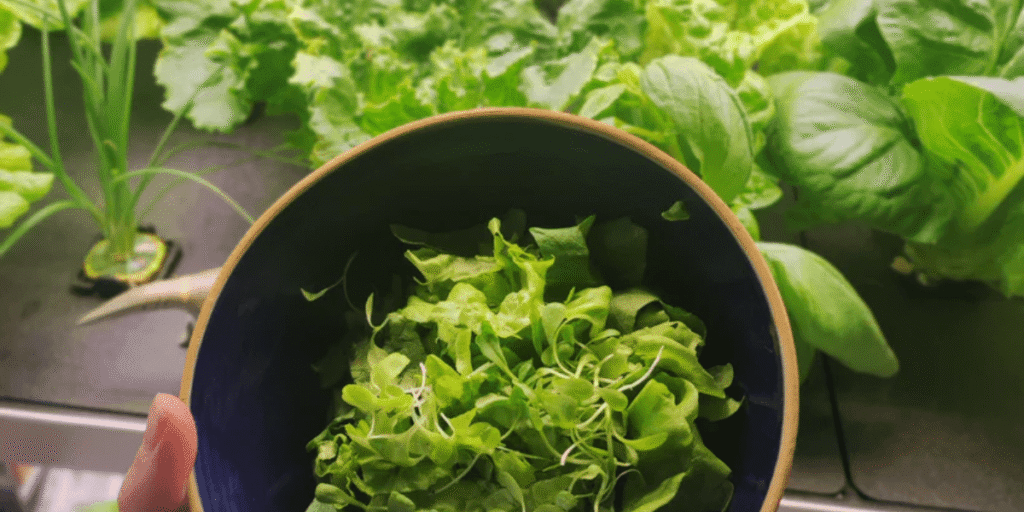Hydroponic Vegetable Journey has been my real-life experience from planting the very first seed to harvesting fresh homegrown vegetables.Hey there, fellow grower! When I first saw those beautiful hydroponic gardens online, I thought I could never do that. I felt both excited and nervous about trying it myself. I experimented with various DIY setups and ran into many obstacles until I discovered Greenfuturehydro. Their system was carefully designed and made the entire journey much smoother and more rewarding.
In this blog post, I am sharing my personal diary of growing hydroponic vegetables. I will guide you through every stage, provide practical tips, and share the small secrets I learned along the way. My goal is to help you enjoy the joy of growing your own food as easily and successfully as I have.
Chapter 1: Starting Your Indoor Hydroponic Garden with Success
In traditional soil gardening, you can never truly see the first struggles of new life. In hydroponics, everything is visible. My journey began with Greenfuturehydro’s specially designed seedling cubes. They feel like soft sponges but provide the perfect balance of air and moisture. I gently placed one or two seeds into each cube, as if tucking them into a tiny, comfortable cradle. Then I covered the entire tray, creating a mini greenhouse.
At this early stage, light is not the main focus. Temperature and humidity are more important. I placed the tray in a warm corner and made it my first task each morning to check on the seedlings. That sense of anticipation feels like waiting for new life to begin. Within a few days, the magical moment arrives. A tiny sprout emerges, followed by two delicate cotyledon leaves. For me, this is the most rewarding part of the process. When the first leaves appear, I know the little sprouts are ready to move into their new home in the Greenfuturehydro system.
Choosing the right plants is one of the first steps in your hydroponics vegetable journey. If you are just getting started, you can explore our guide on the best hydroponic plants for beginners to find easy-to-grow vegetables that thrive indoors. This helps ensure your early hydroponic experience is both enjoyable and successful.

Chapter 2: Root Development and Efficient Nutrient Absorption
This is the most dynamic and exciting phase of the entire journey. Once my seedlings developed a few true leaves, I carefully placed each cube into a net pot, which then fit snugly into the system’s grow tray.
Inside the grow tray, the plant’s roots are no longer confined by soil. They are free to stretch and explore the nutrient-rich solution. This is why hydroponic plants grow so incredibly fast. You can think of hydroponics as a “smart technology” for plants: it eliminates the need for roots to search for food, delivering all the necessary nutrients directly in liquid form. This allows the plant to focus all its energy on growth, not on laboriously foraging for food.
During this vigorous vegetative phase, I use a nutrient formula high in nitrogen to support rapid leaf and stem growth. I check the nutrient solution daily with my EC and pH pens from Greenfuturehydro. This feels like giving my plants a daily check-up. The pH tells me how well the nutrients can be absorbed, while the EC tells me the food concentration. I’ve learned that keeping these two numbers stable is the key to healthy, explosive growth. If the numbers are off, I adjust them immediately, making sure my plants are always “eating well.”

Chapter 3: Harvesting Leafy Greens and Fruiting Vegetables Easily
This is the culmination of all your hard work! Harvesting isn’t just about picking; it’s a skill that encourages your plants to keep producing.
For leafy greens like lettuce and basil, I use the “cut and come again” method. I simply snip the outer leaves, leaving the inner ones to continue growing. This way, I have a continuous supply for weeks, and my kitchen feels like an endless garden.
For fruiting plants like tomatoes, I wait until they are fully colored and feel slightly soft to the touch. I use scissors to snip the fruit from the vine, leaving a small piece of stem attached to keep it fresher for longer.
Harvesting something you grew yourself is a feeling that no grocery store can replicate. This isn’t just a meal; it’s the result of your care, knowledge, and patience.

Chapter 4: Troubleshooting Common Hydroponic Growing Problems
While hydroponics is amazing, it’s not without its challenges. I want to share a few of the hiccups I’ve encountered and how I solved them with the help of Greenfuturehydro and a few tricks.
- Algae Outbreak: I remember one time, sunlight hit my reservoir and it turned into a slimy green mess. The algae was stealing nutrients from my plants. I quickly used Greenfuturehydro’s light-proof reservoir cover and disinfected the tank with a food-grade hydrogen peroxide solution. The algae didn’t stand a chance, and my tank was sparkling clean again.
- The Power Outage Panic: Once, the power went out and my water pump stopped. I was terrified my plants would “suffocate” from a lack of oxygen. I quickly agitated the water by hand to create bubbles. It was a temporary fix, but it taught me that consistent oxygen supply is non-negotiable, and having a reliable system is crucial.
- Leaf “Sunburn”: Sometimes, I’d get a bit careless with my grow lights and notice yellow “burn” marks on the leaves. I learned to adjust my light height regularly based on the plant’s growth and now use the smart lighting system from Greenfuturehydro that automatically adjusts intensity.

Advanced Nutrient Management for Lettuce, Tomatoes, and Cucumbers
One thing I quickly learned in hydroponics is that each crop really needs its own nutrient recipe. Lettuce, for example, grows best with relatively high nitrogen, which helps it put out those tender, leafy greens. Fruiting crops like tomatoes or cucumbers need more potassium and calcium to support flowers and fruit, and magnesium is important too for strong photosynthesis. Paying attention to what each plant needs at every stage makes a huge difference in yield and helps avoid the common deficiencies that catch beginners off guard.
Another key part is keeping an eye on pH and electrical conductivity. Most vegetables do best in a pH range of 5.5 to 6.5, where nutrients are easiest for roots to absorb. EC is a simple way to see how strong your solution is. Too low and your plants could starve, too high and roots might get burned. I like using automated sensors and smart controllers now because they give real-time alerts and can adjust things automatically. It saves a lot of work and keeps my plants growing strong and healthy.
Sustainable Techniques for Eco-Friendly Indoor Farming
One thing I love about hydroponics is how much more resource-efficient it is compared to traditional farming. But you can take it even further by using a closed-loop system. Instead of throwing away old nutrient solution, I filter and sterilize it before reusing it. It saves a ton of water and fertilizer, and in a well-set-up system, you can use up to 90 percent less water than in soil-based growing.
I also like experimenting with organic alternatives to synthetic fertilizers. Things like vermiponics, which is basically nutrient-rich worm tea, compost extracts, or even fish-based solutions can work really well. They need a bit more care to get the balance right, but they lower costs and make the system feel much more environmentally friendly.
Another thing I’ve tried is adding beneficial microbes to the root zone. Bacteria like Rhodopseudomonas palustris can boost nitrogen use and help plants take up nutrients more efficiently, while also keeping nitrate levels lower in the edible parts. Using these natural allies makes the system feel healthier and more balanced, and I’ve definitely noticed my plants are stronger and more resilient.

Pest Prevention and Maintaining a Healthy Hydroponic System
Even though hydroponic systems usually have fewer pests and diseases than soil gardens, issues can still pop up. One approach that works really well for me is Integrated Pest Management. I keep an eye on the plants regularly and use targeted solutions when needed. Introducing beneficial insects like ladybugs or lacewings has helped me keep aphids and whiteflies under control. I also use organic treatments such as neem oil or insecticidal soap, which are gentle on the plants and the environment.
Keeping the system clean is just as important. I make it a habit to flush the system between crops and sanitize trays and pipes with a diluted hydrogen peroxide solution or a bit of bleach. Replacing the nutrient solution before it gets stale also helps prevent algae and harmful microbes from taking over. These simple, consistent steps have made a huge difference in keeping my plants healthy and my hydroponic setup running smoothly for a long time.
Plant Training and Vertical Support for Maximum Yield
Crops that produce a lot of fruit, like tomatoes, cucumbers, and peppers, need more than just good nutrients. They also need proper training and support. I’ve found that pruning side shoots really helps, because it directs the plant’s energy into producing flowers and fruit instead of extra leaves. Using vertical trellises, string supports, or clips to guide the stems upwards improves air circulation, lets more light reach the leaves, and makes harvesting much easier.
These simple techniques do more than just save space. They also help prevent fungal problems and generally lead to healthier, more productive plants. For commercial growers, I’ve noticed that proper training and pruning can be the difference between an okay harvest and an exceptional one.

Integrating Clean Energy into Modern Hydroponic Farms
Looking ahead, hydroponics is starting to combine with renewable energy in exciting ways. In Japan, I’ve seen pilot projects where hydroponic farms are powered by hydrogen fuel cells, creating a self-contained energy loop that is both reliable and sustainable. Pairing clean energy with controlled-environment agriculture could allow urban farms to become nearly self-sufficient, cutting down on carbon emissions and reducing operating costs.
This idea of clean energy paired with clean food shows that hydroponics is more than just a growing method. It is part of a bigger movement toward sustainable city living. I imagine future greenhouses running entirely on renewable power while producing fresh, pesticide-free vegetables right in the heart of the city. It’s an exciting glimpse into what urban farming could look like in the years to come.
Q&A: Real-Life Lessons from Growing Vegetables Without Soil
Q1: Why are my hydroponic roots turning brown and slimy?
A1: This usually means root rot. It happens when the roots do not get enough oxygen or the water is too warm. I always check if my air pump is working and keep the water temperature around 18 to 22 degrees Celsius. If the problem is severe, I trim the dead roots and rinse the system with a diluted hydrogen peroxide solution to give it a deep clean.
Q2: My lettuce tastes bitter. What could be wrong?
A2: Bitter lettuce is often a sign of stress. It can happen when the temperature is too high or when the lettuce grows too long before harvesting. I make sure the lights are not too close and I harvest the leaves when they are still tender.
Q3: How often should I change the nutrient solution?
A3: It is important to change it regularly. I usually replace it every two weeks or sooner if the water looks cloudy. Over time, plants absorb some nutrients faster than others, so the balance gets off. Fresh solution keeps the plants healthy and prevents yellowing leaves.
Q4: How much electricity does a home hydroponic system use?
A4: The cost is quite low. I use energy-efficient LED lights and the electricity consumption is about the same as running a few household lamps. The bills are usually not noticeable.
Q5: How should I dispose of old nutrient solution?
A5: I never pour it down the drain. The solution is full of minerals and works great for houseplants or an outdoor garden. I dilute it with fresh water and reuse it, which is a simple and sustainable way to close the loop.
Summary: Key Takeaways from Successful Indoor Hydroponic Gardening
Watching a hydroponic garden grow has been one of the most rewarding experiences for me. It is much more than just a hobby. From the moment a tiny seed begins to sprout, to seeing the first leaves unfurl, and finally harvesting a colorful, healthy vegetable, every stage is fascinating and educational. I have learned how important proper nutrient management, consistent system care, and attention to environmental factors are for plant health.
Hydroponic gardening has taught me patience and observation. Each plant has its own rhythm, and small adjustments like tweaking nutrient levels, pruning leaves, or supporting vines can make a big difference in yield and quality. Using a well-designed system from Greenfuturehydro has made these tasks simple and enjoyable, turning what could be a complicated setup into a smooth, manageable process.
Overall, growing vegetables hydroponically is not just efficient and clean, but deeply satisfying. It gives me a real sense of connection to the food I eat and confidence in producing fresh, pesticide-free crops at home. This journey has shown me that with the right guidance and tools, anyone can enjoy the full rewards of indoor hydroponic gardening.
Tips for Starting Your Own Indoor Hydroponic Vegetable Garden
Growing fresh vegetables hydroponically can be simpler than you might expect. With the right setup and a few daily habits, caring for your plants becomes an enjoyable part of your routine. Consistent attention keeps your vegetables healthy and ensures your hydroponic system runs efficiently for years to come.
Want to make your hydroponic gardening even easier? Check out our curated selection of reliable nutrient solutions, accurate pH and EC meters, and easy-to-use cleaning tools. Whether you are just starting your first indoor garden or managing a larger setup, these tools are designed to make maintenance simple, effective, and stress-free.
If you have any questions or need personalized guidance, the team at Greenfuturehydro is always ready to assist. Reach out to us at info@greenfuturehydro.com or call +86 13487543942. We are committed to helping you create a healthy, sustainable, and productive indoor garden.
Follow us on Instagram at @Greenfuturehydro for practical tips, inspiring stories, and real experiences from hydroponic growers worldwide. Share your own progress, connect with fellow enthusiasts, and enjoy the satisfaction of growing fresh, vibrant vegetables at home.


